- National Institute of Technology
- NIT Rourkela
- Dr. Arun Kumar
- Prof. Bibhudatta Sahoo
- Dr. Lopamudra Hota
- Vehicular Ad-Hoc Networks
- Vehicle-to-Vehicle
- V2V
NIT Rourkela Researchers Secure Patent For AI-Driven System To Boost Vehicle-to-Vehicle Communication
- By MT Bureau
- September 29, 2025
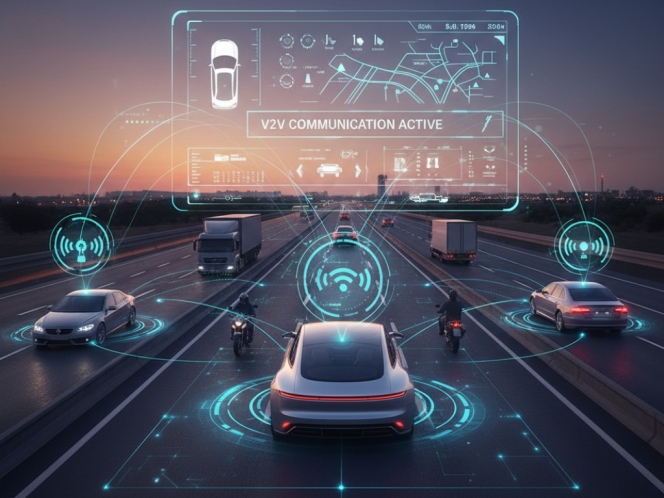
Researchers at the National Institute of Technology (NIT) Rourkela have been granted a patent for an innovative model designed to drastically improve the reliability of future vehicle-to-vehicle communication networks. The patented technology addresses the critical challenge of message congestion in high-traffic scenarios, paving the way for safer, smarter road systems in India.
The patent, titled ‘Adaptive Contention Window Optimisation in VANETs using Multi-Agent Deep Reinforcement Learning for Enhanced Performance Model,’ was filed by Dr. Arun Kumar, Assistant Professor; Prof. Bibhudatta Sahoo, Professor and Dr. Lopamudra Hota, Research Graduate, all from the Department of Computer Science & Engineering at NIT Rourkela.
Their work focuses on Vehicular Ad-Hoc Networks (VANETs) – the foundational concept that enables vehicles in close proximity to communicate directly with one another. VANETs are essential for future functionalities like warning drivers about sudden obstacles or precipitous braking, aiding automated traffic control and assisting emergency services.
However, a core issue in VANETs is overcrowding. When multiple vehicles transmit messages simultaneously, the congestion leads to delays or lost messages, which severely compromises the system's ability to function safely.
The NIT Rourkela solution tackles this problem using artificial intelligence (AI). Their model employs multi-agent deep reinforcement learning to enable each vehicle to intelligently stagger the timing of its messages based on the real-time actions of other vehicles in the network. Instead of communications competing and colliding, the system learns to sequence and prioritise time-sensitive alerts, such as emergency warnings. This adaptive adjustment significantly reduces transmission delays, ensuring critical alerts are reliably delivered.
Dr. Arun Kumar highlighted the profound safety implications of their research, referencing the severe toll of road accidents in the country. “In 2023, India reported around 480,000 road accidents and around 172,000 deaths, many of which could be prevented using modern technologies. Our work is a step towards building safer roads and smarter cities. We envision a near future where autonomous vehicles become a reality in India, and this patent is a small step in that direction, driving the spirit of Innovate in India and Make in India,” Dr. Kumar said.
The developed model ensures that even under busy conditions, the right message reaches the right recipient at the right time, a crucial requirement for future transportation systems where vehicles must coordinate in real-time.
The enhanced communication model has broad applications across future mobility. Current VANETs use cases include:
- Electronic brake lights: Notifying drivers of braking scenarios not yet in their line of sight.
- Platooning: Enabling a series of cars to closely follow a lead vehicle using distributed acceleration and steering control data.
- Enhanced Navigation: Providing instantaneous, accurate information on current road traffic conditions.
- Emergency Response: Rapid broadcast of crucial information to vehicles in an area affected by an incident.
- Electronic Toll Collection: Providing remote access to real-time data for automated toll systems.
Prof. Bibhudatta Sahoo emphasised the practical impact of the work on national infrastructure. “The patent represents a practical step towards preparing India's road system for vehicle-to-vehicle communication. By addressing potential congestion in VANETs and providing a model for adoptive, coordinated communication, the findings lay the groundwork for safer and a more efficient traffic management. We invite researchers across institutions to join our efforts in making future autonomous vehicles and collaborate with our research lab at NIT Rourkela,” said Prof Sahoo.
Pioneer to Showcase Solutions For SDVs And Two-Wheelers At CES 2026
- By MT Bureau
- November 28, 2025
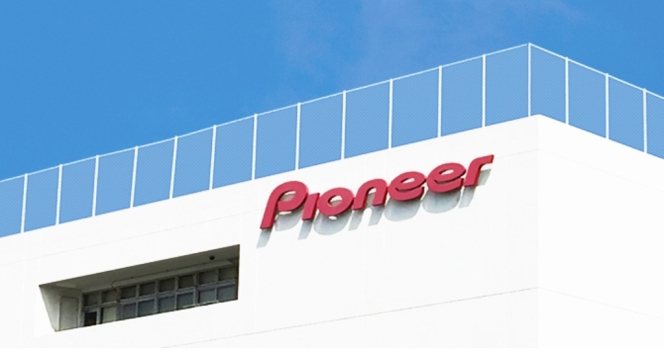
Japanese technology company Pioneer Corporation has announced it will attend CES 2026 in Las Vegas from 6-9 January 2026. The company plans to showcase its recent accomplishments in devices and solutions for software-defined vehicles (SDVs) and motorcycles.
These solutions leverage Pioneer's expertise in in-vehicle acoustic environments, human-machine interface (HMI) and connectivity technologies.
The presentation will cover several areas:
- Integrated Sound Platform: This platform is scalable, allowing diverse automakers to install Pioneer's or other vendors’ sound solutions tailored to their models. The software-enabled hardware design allows for lighter parts and components, contributing to lighter vehicles and improved fuel economy, while optimising costs. Visitors can experience three types of sound systems (entry-level, premium, and luxury) in a demo vehicle.
- Spatial Audio System: An advanced audio system, adaptable to vehicles including older models, provides drivers and passengers with a high-quality spatial audio experience. This innovation is the culmination of Pioneer’s expertise in in-vehicle acoustics, coupled with technologies. Visitors will experience multi-channel spatial audio and a sense of presence in a demo vehicle.
- Entry-level Cockpit Domain Controller (CDC): A newly developed CDC is designed for budget-friendly vehicles, offering a cost-effective alternative for flexible display and control design. This CDC shares fundamental design with Pioneer’s existing IVI software without employing a hypervisor, enabling entry-level vehicles to benefit from cockpits.
- AI-enabled Camera Solutions: Next-generation automotive-grade AI-enabled camera platforms elevate driver safety by enhancing visibility and eliminating blind-spots and also deliver personalised driving experiences. Pioneer will showcase a demo vehicle equipped with ten AI-enabled cameras, designed for factory-installation by automakers, providing the driver with 360-degree surround view during driving, parking, and poor weather scenarios. The company will also showcase its drive recorder portfolio, which encompasses a connected smart camera featuring real-time driver monitoring, alerts and driving diagnostics, as well as digital mirrors, modular dashcams and other accessories available for factory installation and as add-ons to enterprise fleets.
- Connected Solutions for Motorcycles: Software-defined solutions for motorcycles will be unveiled, encompassing meter clusters, onboard camera devices, and other connected solutions. Live demonstrations will showcase services made possible by Pioneer Ride Connect, which integrates Bluetooth Low Energy (BLE) between smartphones and onboard devices, AI technology for enhancing the safety and entertainment of motorcyclists and unique HMIs that facilitate an intuitive user experience.
MG Windsor EV Records Leh To Kanyakumari Journey In 83 Hours
- By MT Bureau
- November 27, 2025
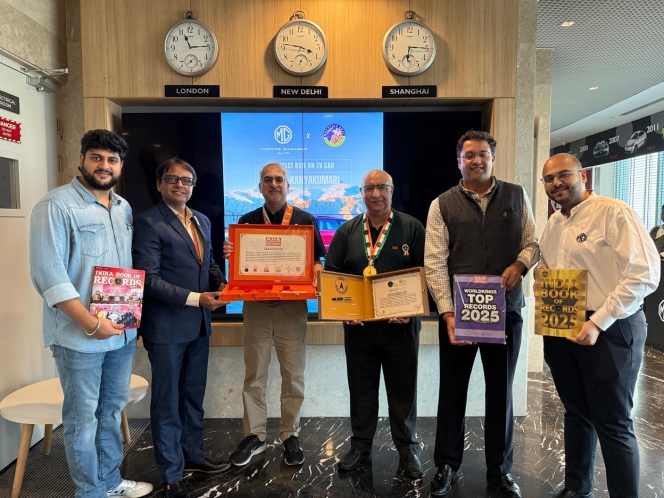
JSW MG Motor India has announced that its popular MG Windsor electric vehicle (EV) has completed a journey from Leh to Kanyakumari, covering 3,757 kilometres in 83 hours and 43 minutes. The journey was undertaken by Mountain Goat, a group of motorsport professionals.
This time is the fastest for an EV to complete the route and has been recognised by the India Book of Records and Asia Book of Records. The company states this marks the Windsor as India’s First EV to undertake this journey.
The Windsor navigated through Ladakh’s high-altitude landscape to the southern coast, showing the car's reliability, range and performance under extreme conditions. The vehicle made 20 charging stops, demonstrating India’s growing fast-charging infrastructure.
The charging points were located using the e-Hub by MG app, which connects users to over 13,000 EV charging points across India through partnerships with 36 charge-point operators. This achievement supports the company's ‘EV Sahi Hai’ campaign.
Vinay Raina, Chief Commercial Officer, JSW MG Motor India, said, “Completing a diverse expedition from Leh to Kanyakumari using an EV in record time is a bold testament to India’s growing confidence in electric mobility and the infrastructure that powers it. This achievement also highlights MG Windsor’s reliability and performance across some of the most challenging terrains in the country. The future of transportation is clean mobility and JSW MG Motor India continues to play a leading role in this transition.”
Sanjay Bhola, Adjudicator, Asia Book of Records, and India Book of Records, said, “Heartiest congratulations to the entire team for this remarkable accomplishment and for setting a prestigious record with both India Book of Records and Asia Book of Records.”
The MG Windsor comes with a 52.9 kWh lithium-ion battery, delivering a certified range of up to 449 km per charge and supports fast charging. The car recently crossed the 50,000 sales milestone in India, the fastest time for an EV in the country.
Since its launch in September 2024, the MG Windsor has been India’s best-selling EV. It features an ‘AeroGlide’ design and ‘Aero Lounge’ seats reclinable to 135 degrees. The centre console includes a 15.6-inch GRANDVIEW Touch Display. The company has since introduced the MG Windsor PRO variant with an extended battery pack and the MG Windsor Inspire, a limited-edition anniversary special.
BatteryPool Raises INR 80 Million In Pre-Series A Led By Inflection Point Ventures
- By MT Bureau
- November 27, 2025
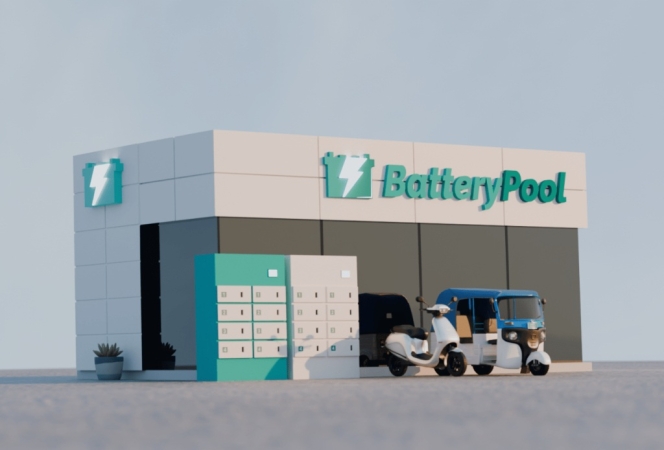
BatteryPool, a start-up focussing on pay-as-you-go access to EV batteries, has raised INR 80 million in a Pre-Series A funding round led by Inflection Point Ventures. The round also included participation from Indian Angel Network (IAN), Chennai Angels, Keiretsu Forum and notable HNIs.
The start-up currently manages over 2,000 batteries across six cities. The funding will be used to scale its battery fleet 10x over the next 18 months and strengthen its nationwide footprint.
BatteryPool uses proprietary hardware and an IoT-connected battery management system to power a sachet-style, pay-as-you-go energy platform for EVs. The company offers a model that allows riders to pay in small daily, weekly, or monthly amounts, making EV usage more accessible.
Vikram Ramasubramanian, Inflection Point Ventures, said, “As an emerging economy that's adopting EVs, India holds immense potential that can be unlocked through innovative, flexible solutions. Where commercial operation of EVs is concerned, fast and efficient charging becomes vital because any delay directly leads to a loss of time and hence revenues. BatteryPool addresses this by providing seamless, pay-as-you-go access to charged batteries, helping riders and businesses be constantly mobile. In addition, the company monetizes batteries through their complete lifecycle, creating multiple revenue streams out of one single asset.”
Ashwin Shankar, Founder, BatteryPool, said, “The sachet model transformed how Indians consumed everything from mobile data to daily essentials, EVs are next. By bringing sachet-style, pay-as-you-go energy to batteries, we’ve made electric mobility affordable and accessible to the masses. As we move forward, we’re focused on strengthening the ecosystem, building battery access, improving the user experience, and supporting the everyday rider as the country transitions to electric mobility.”
BatteryPool was founded in 2020 by Ashwin Shankar, an Electrical Engineer who previously worked at Schlumberger and NASA.
Government Of India Approves INR 72.8 Billion Scheme For Rare Earth Permanent Magnet Production
- By MT Bureau
- November 26, 2025

The Union Cabinet, Chaired by Prime Minister Narendra Modi, has approved a Scheme to Promote Manufacturing of Sintered Rare Earth Permanent Magnets with a financial outlay of INR 72.8 billion.
The initiative aims to establish 6,000 Metric Tonnes per Annum (MTPA) of integrated Rare Earth Permanent Magnet (REPM) manufacturing in India. The government states this will enhance self-reliance and position India as a key player in the global REPM market.
REPMs are types of permanent magnets vital for electric vehicles, renewable energy, electronics, aerospace and defence applications. India’s demand for REPMs is met primarily through imports, but consumption is expected to double by 2030 from 2025.
The scheme will support the creation of integrated REPM facilities, covering the conversion of rare earth oxides to metals, metals to alloys and alloys to finished REPMs. This step supports the Atmanirbhar Bharat Abhiyan and India's Net Zero 2070 commitment.
The total financial outlay of INR 72.8 billion consists of INR 64.5 billion towards sales-linked Incentives on REPM for five years. While the remainder INR 7.5 billion towards capital outlay for setting up 6,000 MTPA of manufacturing facilities.
The total capacity will be allocated to five beneficiaries through a global competitive bidding process, with each receiving up to 1,200 MTPA of capacity.
The scheme duration is seven years from the award date, including a two-year gestation period for setting up the integrated facility and five years for incentive disbursement.
The government states this initiative is a step towards strengthening the domestic REPM manufacturing ecosystem and enhancing competitiveness in markets globally.
Shailesh Chandra, President, SIAM, “The Indian automobile industry welcomes the Government of India’s newly announced scheme to promote the domestic manufacturing of Rare Earth permanent magnets, with an allocated outlay of INR 72.8 billion. This initiative is a significant step toward building a resilient and stable supply chain, particularly for components and sub-assemblies essential for the production of electrified vehicles.
The scheme is expected to accelerate adoption of clean mobility solutions and support India’s broader sustainability goals. By strengthening indigenous manufacturing capabilities, it will contribute to reducing carbon emissions and lowering dependence on crude oil imports, further enhancing the nation’s energy security.”
Vikrampati Singhania, President, ACMA, “ACMA wholeheartedly welcomes the Cabinet’s approval of the REPM Manufacturing Scheme. This is a strategic and forward-looking intervention that addresses one of the most critical gaps in the EV and advanced mobility ecosystem. Rare Earth Permanent Magnets are foundational to electric motors and high-efficiency systems, and the establishment of a domestic, integrated manufacturing base will significantly strengthen India’s technological competitiveness. This initiative will not only reduce import dependence but also provide long-term resilience to the automotive supply chain, encourage investments in advanced materials, and position India strongly in global value chains for EVs and clean energy. We commend the Government’s vision and remain fully committed to supporting the industry in leveraging this opportunity for innovation, value creation, and Atmanirbhar Bharat.”
Stephane Deblaise, CEO, Renault Group India, “The Government’s decision of investing INR 72.8 billion for India’s first integrated Rare Earth Permanent Magnet manufacturing scheme is a pivotal step in strengthening the nation’s self-reliance aspirations. This initiative reflects India’s strategic intent to strengthen its rare-earth refining capabilities and accelerate high-value manufacturing. For the automobile sector, localizing rare earth magnets will boost growth for both auto OEMs and component manufacturers, support clean energy powertrains, reduce import dependence, deepen the domestic value chain and enhance long-term competitiveness. We welcome this vision and look forward to contributing to a robust, future-ready mobility landscape that supports India’s sustainable growth and its ambition to become a global automotive hub.”
Jaideep Wadhwa, Director, Sterling Tools, "The Government scheme to invest nearly INR 75 billion in Sintered Rare Earth Permanent Magnet production is a very timely and welcome move. This, along with the plans for semiconductor and cell manufacturing, reaffirms the country’s commitments to electrification. However, this one initiative, aimed at adding 6,000-tonne capacity over seven years, will not be a panacea for all REM availability issues. India must also promote technologies to reduce the overall dependence on rare earth magnets. A holistic solution must include development of magnet free motor technologies. Fortunately, great progress has been made in magnet free technologies in recent years. Indian OEs and Tier 1s need to work together to commercialise these technologies at the earliest."



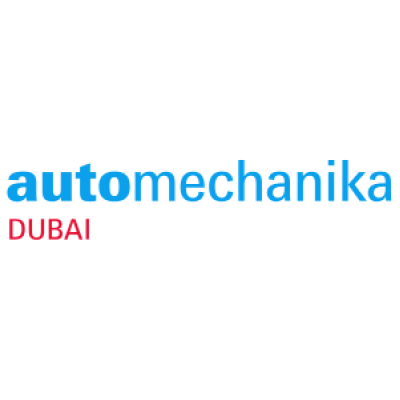


Comments (0)
ADD COMMENT